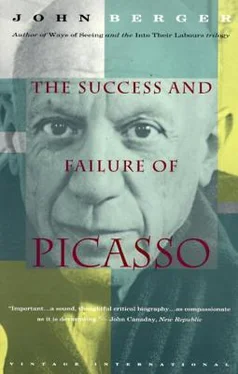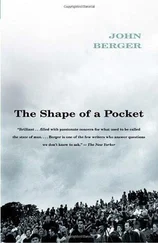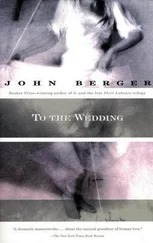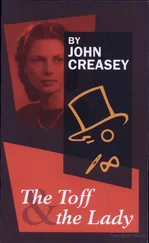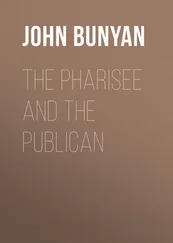What was this promise? What were the possibilities suggested? Let us first consider the question from the point of view of art. Then, later, we will take a broader, more general view.
I have referred to Cubism as a revolution in art. It did far more than extend the language of art as, say, Impressionism did. And it was far more than a stylistic revolt against what had preceded it. Cubism changed the nature of the relationships between the painted image and reality, and by doing this it placed man in a position which he had never been in before.
Mankind always takes up only such problems as it can solve; since, looking at the matter more closely, we will always find that the problem itself arises only when the material conditions necessary for its solution already exist or are at least in the process of formation.
This famous quotation from Marx concerning social revolution applies also to art. The preparations for a revolution are always gradual. (The flaw in the Fabians’ view of ‘the inevitability of gradualness’ is that they expect the preparations to go on for ever and thus to cease to be preparations and to take the place of the revolution itself.)
The preparations for the revolution of Cubism were begun in the nineteenth century by two artists: Courbet and Cézanne. The importance of Cézanne for the Cubists has been stressed so often that it has become a commonplace. As for Courbet, Apollinaire in Les Peintres Cubistes (which was the first full-length communiqué issued by the Cubists) says quite simply: ‘Courbet is the father of the new painters.’
Both Courbet and Cézanne changed the emphasis of the painter’s approach to nature: Courbet by his materialism, Cézanne by his dialectical view of the process of looking at nature.
No painter before Courbet was ever able to emphasize so uncompromisingly the density and weight of what he was painting. You can see it in the way he painted an apple or a wave, or in the way he painted the heavy languor and creased dresses of two girls lying by the Seine.
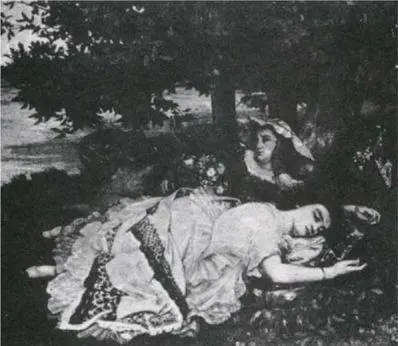
26 Courbet. Les Demoiselles des bords de la Seine. 1856
He was the heroic St Thomas of painting — in so far as he believed in nothing which he could not touch and judge with his hand. Painters had come to rely on pictorial conventions — light and shade for solidity, perspective for space — to give the illusion of reality, and then to give self-indulgent fantasies the semblance of reality. Courbet, whilst still using paint on canvas, wanted to go beyond such conventions and find the equivalent of the physical sensation of the material objects portrayed: their weight, their temperature, their texture. What perspective towards the horizon had once meant to Poussin, the force of gravity meant to Courbet.
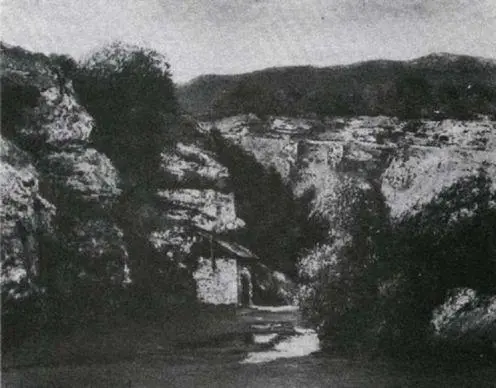
27 Courbet. The Pond. 1860s
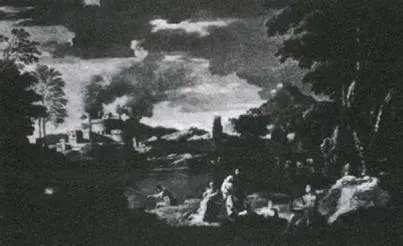
28 Poussin. Orpheus and Eurydice. 1650
Cézanne was very different in both temperament and background; whereas Courbet’s art was based on conviction — if once he could be given tangible proof — Cézanne’s was based on perpetual doubt. His doubts arose out of conflict raging within him. On one hand he wanted to create an ordered, harmonious vision of the world like Poussin; on the other hand he knew, with the help of Impressionism and on the scrupulously examined evidence of his own eyes, that everything seen was relative, and that no single painted view of anything could do justice to the experience of it in reality.
He observed that if he moved his head a little to the right he saw a different aspect of what was in front of him from what he would see if he moved his head a little to the left. Every child discovers this by lying in bed and closing each eye alternately. Every painter must have observed it since painters first drew from nature. The difference was that Cézanne thought it mattered.
The Impressionists had shown how appearances change with the light. Degas had shown how appearances are changed by rapid movement. Gauguin and the Symbolists were making a virtue out of subjective distortion.
It is well for young men to have a model [Gauguin said], but let them draw the curtain over it while they are painting. It is better to paint from memory, for thus your work will be your own.
Cézanne was surrounded by those who were disconnecting and making art more and more fragmentary. He resented this. He longed for precision and synthesis: a longing made the more intense because it was partly a defence against the violence of his own emotional nature.
It was this resentment which first made him think that the changes he observed when he moved his head mattered. He was haunted by the evidence and then by his longing for order, one after the other, as though when he shut one eye he saw one ghost, and when he shut the other, he saw the second. He had either to go mad or break through. He broke through in the only way he could — with a dialectical solution which destroyed the opposition between the two demands and admitted them both.
Cézanne began to put down on the canvas the variations of what he saw as he slightly changed his view-point. One tree becomes several possible trees. In his later works he also left a large area of the canvas or paper blank. This device served several purposes, but the most important is seldom mentioned: the blank white spaces give the eye a chance to add imaginatively to the variations already recorded; they are like a silence demanded so that you can hear the echoes.
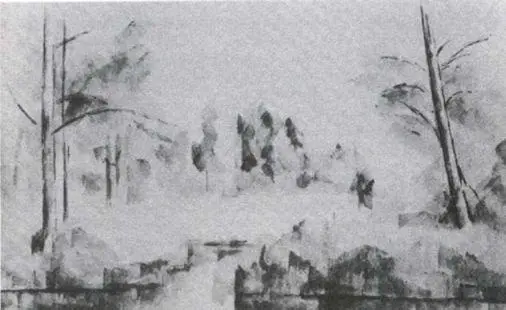
29 Cézanne. Trees by the Water. 1900-04
The order in a painting like Trees by the Water has been established between the possibilities suggested by the different view-points. A new kind of certainty has been called into being — a certainty based on the acceptance of doubt. Nature in a picture is no longer something laid out in front of the spectator for him to examine. It now includes him and the evidence of his senses and his constantly changing relationships to what he is seeing. Before Cézanne, every painting was to some extent like a view seen through a window. Courbet had tried to open the window and climb out. Cézanne broke the glass. The room became part of the landscape, the viewer part of the view.
This then was the revolutionary inheritance that the nineteenth century bequeathed to the twentieth: the materialism of Courbet and the dialectic of Cézanne. The task was to combine the two. Followed up separately, each would lead to a cul-de-sac. Courbet’s materialism would become mechanical; the force of gravity, which gave such dignity to his subjects, would become oppressive and literal. Cézanne’s dialectic would become more and more disembodied and its harmony would be obtained at the price of physical indifference.
Today both examples are followed up separately. Most painting in the world now is either banally and mechanically naturalistic or else abstract. But for a few years, from 1907 onwards, the two were combined. Despite the ignorance and philistinism of Moscow in its Stalinist and post-Stalinist pronouncements about painting, and despite the fact that none of the artists concerned were in any way marxists, it is both possible and logical to define Cubism during those years as the only example of dialectical materialism in painting.
Читать дальше
